Steph W. from SEOPressor


...help you check your website and tell you exactly how to rank higher?


80
score %
SEO Score

Found us from search engine?
We rank high, you can too.
SEOPressor helps you to optimize your on-page SEO for higher & improved search ranking.
By winniewong on November 21, 2018
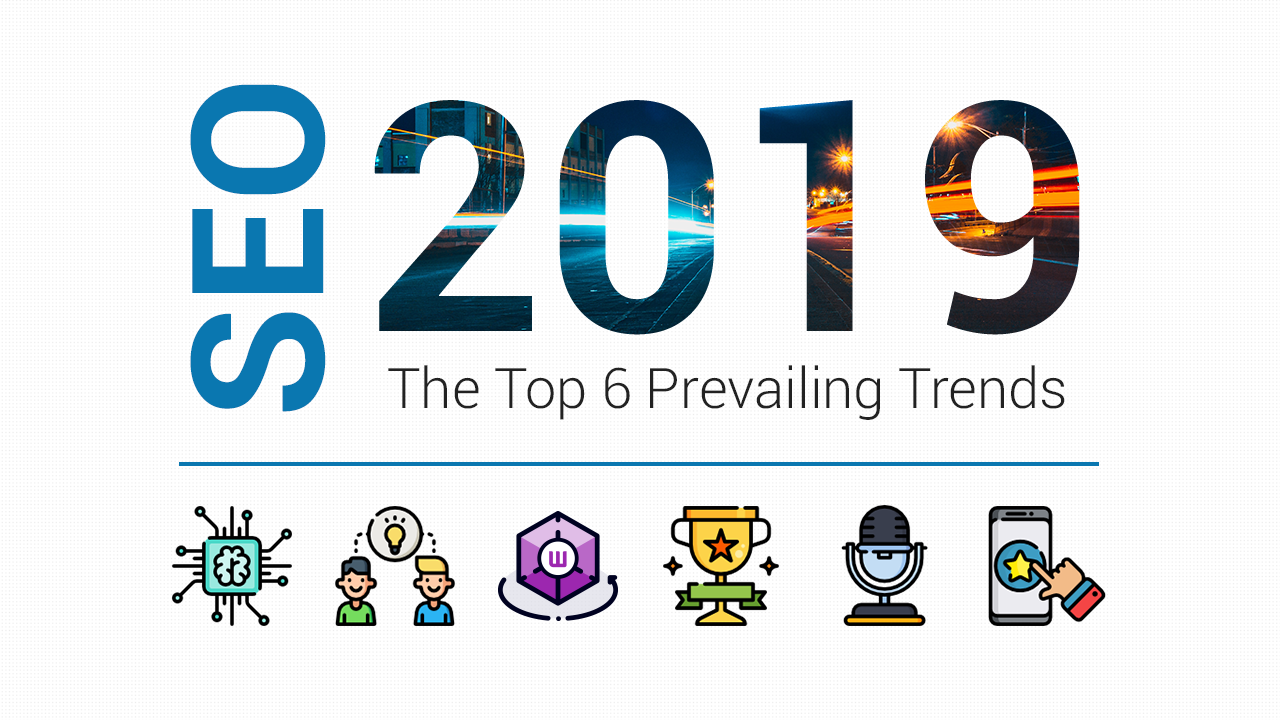
The world of digital marketing is one of constant change.
In fact, when you think you’re getting a hang of things, you realize that you may be lagging behind. So, the only way to thrive in an ever-changing environment is to evolve and adapt.
SEO 2019 has been a year of search engines striving to improve the quality of search results. So far we’ve seen an onward march of mobile domination, personalization in search and algorithmic changes to name a few.
As we are nearing 2020, I’ve rounded up a list of SEO industry trends that you ought to look out for. With these prominent trends that are gaining momentum in mind, you can always keep one eye on the horizon to see what lies ahead.
If you want to up your search optimization game, improve rankings and get more organic traffic, then this is the 2019 SEO Guide you’ll need.
Language is beautiful.
But, it is also hard, especially when it comes to describing abstract linear concepts.
This is where math is really useful. In the field of Natural Language Processing (NLP), in which computers are taught to understand and generate words in order to communicate more humanely.
Discussions on terms like NLP, Artificial Intelligence (AI) and Machine Learning (ML) are no stranger to the Internet community these days. All three go hand in hand because a computer has to learn in order to process language.
That happens when the computer is provided a training set of data to the models or algorithms in use and is refined until the model generally does what you want it to do.
In 2013, a super complex algorithm that smart data scientists from Google created using this framework formed what is called, Word Vector or Word Embedding today.
This is an exciting field because it’s still a baby; its capabilities and influence are only going to grow in the near future. If you’ve noticed, it’s pretty clear that Google is betting heavily on machine learning.
2019 is a year we’ll see more breakthroughs done by computers.
Moving on, this glossary will introduce key concepts and terms in a way that (hopefully) even our grandmothers can understand.
Let’s tackle this part by part.
Yes, the mighty search engine we are all fighting to get a spot on.
It is an algorithm that helps Google learn about the relationships between words, based on examples of actual language usage.
These vector models map semantically similar phrases to nearby points based on equivalence, similarities or relatedness of ideas and language.
A simple way to investigate the phrases is to find the closest words for a user-specified word. The distance between words serves the purpose.
For example, if you enter “France”, distance will display the most similar words and their distances to “France”, which should look like:
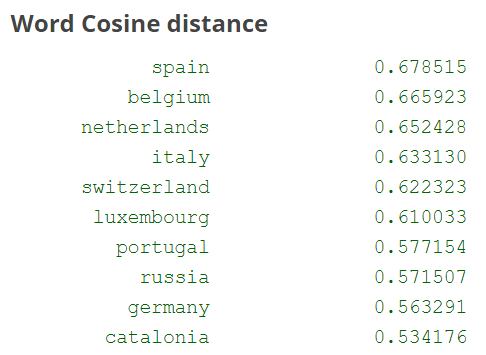
The value is between 0 and 1. The closer it is to 1, the more related it is
Believe it or not, the model can leverage very little of what it has learn about “France” when it is processing data about “Spain” (such as they are both countries, Europe, etc.)
At present, word vectors are considered to be among a number of successful applications of unsupervised learning.
Word2vec is one of the most popular technique to learn word vector using shallow neural network. It was developed by Tomas Mikolov in 2013 at Google.
He was the one who really brought word vector to the fore through the creation of Word2vec, a toolkit enabling the training and use of pre-trained vectors.
The easiest way to think about Word2Vec is that it figures out how to place words on a “chart” in such a way that their location is determined by their meaning.
To put it simply, two words that have close proximity in the vector space tend to share a common context; whereas two words that are far from each other are regarded as not contextually related.
Here’s an illustration to guide you on the Word2vec explanation above:

In a research done by Tomas Mikolov and his team, it is understood that when the word vectors are well-trained, it is possible to find accurate answers and improve many future NLP applications.
In a nutshell, this model is very fast and easy to use. It requires only plain text, which we have a lot.
For best performances, it is important to continue training (fine-tuning) them as it feeds on data. The bigger the data, the more accuracy you’ll get.
There’s been a lot of discussion about Word Vector in the search engine optimization space lately, sparked by opinions expressed by numerous SEO specialists that it determines the ranking of a website. It is one of the factors that contributes to SEO in 2019.
If you’ve not noticed, Google is rapidly getting cleverer (even-human like, if you will) at figuring out the meaning behind keywords, rephrasing them, and producing better search results in response.
This implies that Google can do much better searches than before. Every single query is processed in a way that it answers to the user’s intent better.
So, without implementing the correct word vector, you are less likely going to rank on the first page of SEO.
If you’re asking if this is a game changer, yes. It definitely changes how Google sees and handle searches, especially as it continues to update with new data or models over time.
You’ve already known the importance of having the right word vector. So what should be the next step?
Finding a way to get your website ranking #1 on SERP and gain maximum traffic and conversions of course!
The question is:
How is it possible to find highly accurate word vector to be included in your website?
Using WordGraph.io, the world’s first intelligent Word Vector Tool!
It is created based on Neural Networks for Advanced Natural Language Processing Techniques and trained using state-of-the-art Machine Learning framework.
Understanding the idea and significance behind Word Vector, the team from WordGraph has came up with an awesome tool that allows you to find meaningful keyword composition of your website based on the main keyword.
WordGraph is powered by Word Vector Technology based on AI, designed for you to analyze your content and help you improve content relevance against the Top 10 SERP ranking websites.
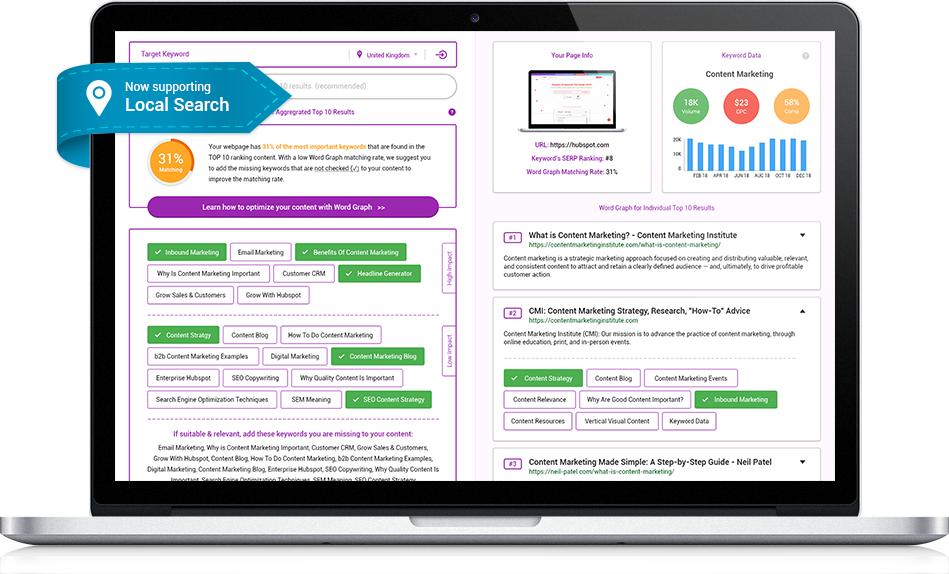
This machine learning model suggests you keywords that are contextually and mathematically linked to your main keyword.
Their aim is to simplify these sophisticated technologies used by search engines and make them readily available for the SEO communities.
Speaking about sophistication, their proprietary trained AI model understands unintentional or deliberate misspellings, duplicates, abbreviations, word placement swapping, and multiple fields of different types.
For instance, it can draw reference between:
Now, WordGraph is able to understand what they exactly mean even with a little variation. Such a brilliant advancement, right?
Think about it, by using this one tool, it’ll save your time, energy and money in having to learn all these scientific and mathematical understandings by scratch! Say hello to 10x more productivity now!
What’s even better, you can also uncover your competitor’s keywords and see what makes them rank in the first place!
Check out the exclusive interview with the brain behind WordGraph, on how you can get the most out of this tool.
BiQ is an all-in-one SEO tool that can work fantastic with WordGraph.
When WordGraph is telling you all about which keywords to target and how to improve your content, you can then use BiQ to keep track of your page ranking performance.
Not only that, if you plug your content into the content intelligence tool built in BiQ, the tool will show you a whole list of on-page SEO tips that you gotta hit if you want that ranking and that sweet traffic influx.
Here’s an example on how the content intelligence work. You can navigate between different lists, all filled with actionable ways to help you master on-page SEO and rank!

With billions of searches made every single day, it is no doubt that Google is moving on to rely on AI, to power the complexity of searches. As mentioned above, AI is making search more human.
We’ve seen RankBrain, which uses machine learning to understand the content it crawls, helps Google to process search results and understand a user’s search. Then, the AI uses this information to improve the search results for users.
In other words, it listens to the user intent and it learns. Thus, giving better search experience for the users.
Neil Patel describes “user intent” as the goal someone has in mind when typing a query into Google.If you are not answering what your users are searching for in 2019, I bet you will be left far behind. It’s still not too late to buckle up and be focused on satisfying the needs of the users in depth!
If you look into the Google Search Quality Guidelines, it’ll give you a greater understanding into what Google wants to display in their SERPs. There, you’ll be able to see how SEO-focused is directed into user intent nowadays.

Websites that have high expertise, authoritativeness, and trustworthiness (E-A-T) that benefits the user will receive high ratings, while sites that give a result that does not match with what the user is looking for when they do searches will be given low ratings.
For example: User A is looking for information about German car, but is directed to a Japanese car company. Thus, the result is a low rating for the site.

The breakdown of a searcher’s query and their subsequent journey
Vytautas Palovis, SEO Team Lead at Oberlo, says that:
If you’d like to add on to your knowledge about user’s intent, do check out this blog post: The Evolution Of Search: Understanding User Intent.
So, what should you do to prepare for a greater SEO 2019 trends?
Look back into your content. Optimize them in a way that can answer the user intent.
For this, you can make use of Latent Semantic Indexing keywords and answer every possible question regarding the content you are going to create.
LSI keywords play an important role in your optimized content as it provides context to them and that is exactly what Google is looking for. When Google can understand the context of your content, the higher the chances that you will get ranked.
There’s a latent semantic indexing tool that can help you with it in finding your most relevant LSI keywords.
Simply put your main keyword in LSIGraph’s search box and get the relevant keywords to optimize content for your target keywords instantly.
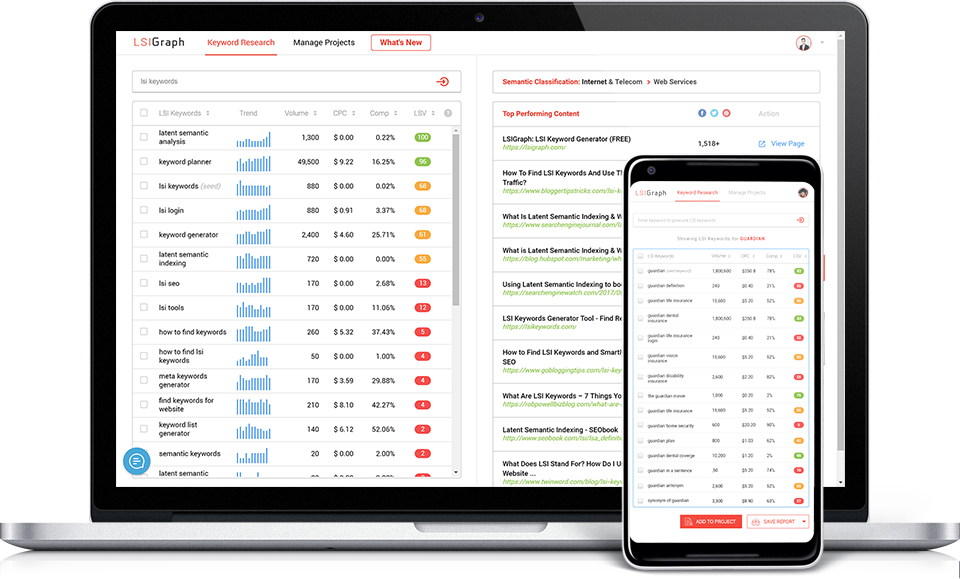
However, you don’t want to just start stuffing your content with LSI keywords as this will end up having the same effect as stuffing your content with regular keywords – your content will become unreadable and be seen as spam.
The first thing you need to do is put yourself in the shoes of the user. What would a user be searching for in order to find your content? Keeping your user’s intent in mind is important since it will help keep you from straying away too far from your main keywords.
*Your LSI keywords need to be relevant to not just the keyword you are using but the context of the keyword.
You can use your LSI keywords anywhere within the content of your article, including your title tag, header tags, permalinks, anchor texts, beginning paragraph and ending paragraph.
Using LSI keywords is a smart move as it will help impress upon the mind of your audience what your is about. It makes your visitors to actually read your content because it is not stuffed with keywords. Most importantly, Google loves them too!
A featured snippet (also called Answer Box) is placed right on top of the search result. It appears even before the #1 ranked website. Though it has been around since 2014, yet not many marketers are taking advantage of this strategy.
With SEO in 2019 becoming a hot topic, we’ll see the featured snippet play an even important role in SEO because it satisfies the user’s need for simple answers to their question.
Let’s look at what Google says about featured snippets:
Featured snippets fulfill the user’s need for simple answers to a question, which is displayed on top of the SERPs. Here, I performed a Google search on “how to make pancakes”. Below is a screenshot of a featured snippet for this query:

Back in May 2017, Ahrefs ran a study of 2 million featured snippets. Out of the 112 million keywords in their database, they observed that almost 14 million (a little over 12%) were triggering featured snippets in their results.
Getting on position zero gives you advantage such as:
So, how do you get your content to appear in featured snippets and stick?
Ultimately, create a content that is good enough to rank on page one of Google, organically.
According to Moz, most featured snippets come from content that ranks in the first page, or top 10 results.
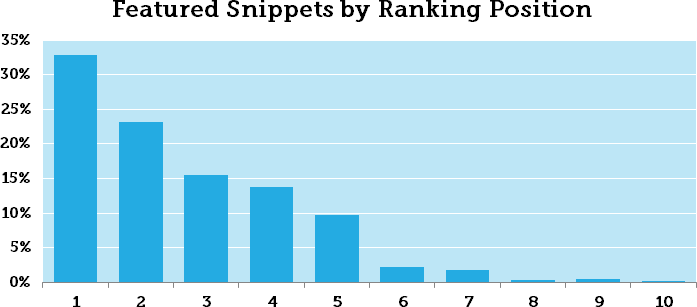
As you can see, around 90% of featured snippets are pulled from content pieces that rank in the top 5 positions in SERP. Fret not, there are still opportunities to be featured as long as you are in page one.
Fundamentally, try to optimize your content for the specific question it is designed to answer. Again, Google is always looking for BEST answer when it comes to position zero.
Be in the searches’ shoe and list out the tons of answers that they are looking for when perform a searches. Then, format your content with the featured snippet in mind.
Here are some tips to increase the chances of getting displayed on the featured snippets:
Now go get that featured snippet spot!
People spend an average amount of 3 hours and 35 minutes on their smartphones every day.
And according to Comscore, 40% of adults now use voice search at least once per day. That’s 35x more queries in 2018 than there were in 2008!
These days, people need and want definite answers from Google. Instead of typing just a couple of words, we nowadays type of speak a whole sentence. Voice searches are getting longer and more conversational.
To optimize your site for voice search, bear in mind that, when users do that type of search, they use direct questions.
Like:
The increasing use of voice search has made it important for companies to rethink their SEO and marketing strategies in 2019. That is why I am strongly emphasizing in today’s 2019 SEO Guide.
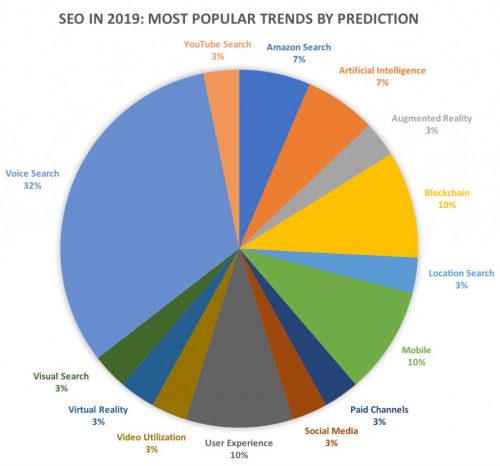
Voice Search tops the poll with 32% as the most popular trend in 2019 by prediction
According to studies, the first organic search result on Google’s SERP gets up to 35.35% of clicks. In voice search, there’s even a smaller window. Ranking at the top means everything!
Give them what they need,create holistic content, optimize for featured snippets and think about keywords that people will speak rather than type.
So you know the importance of voice search now. The question is how can you optimize for it?
1. Focus On Questions!
When you use voice search, you don’t say keywords but a whole sentence right?
Hence, an increased focus on exact search terms and long-tail keywords would prove to be very beneficial when it comes to nailing the first spot on search engine ranks.
You need to find the natural language keyword phrases that your target audience is most likely to ask.
2. Provide Answers!
When you optimize for voice search, you’re likewise optimizing for featured snippets.
Here’s a few things to focus on:
3. Improve Site Speed
Page speed is a vital factor because users expect quick results when searching for information on the go.
The average time most websites take to load a mobile landing page is 15 seconds. However, keeping it under 3 seconds would be the best choice.
If you aren’t ranking well due to speed issues, then it will greatly affect your rankings for voice search.
4. Mobile and User-Friendliness
This is another important factor in the bounce rate and helps users last longer on your website.
With user-friendliness always being a priority, and with mobile uses dominating searches, having a responsive design definitely helps.
5. Give It A Test
Always make it a point to check and verify the things that you optimize for.
Test if on different devices, check on where your competitors are ranking and see how or where the answers are pulled from.
With that, you’re sure to always be in the loop and not be left out!

The primary things we do with our mobile phones these days
In recent years, we have heard again and again from Google that they care about the mobile compatibility of websites.
In fact, as most of the 2019 SEO Guide are mentioning, we too are looking at mobile optimization or mobile-first indexing, becoming one the key factors for our ranking and conversion rate.
Back to when Google announced the Mobile-First Index on 26th March 2018, it is confirmed that Google is moving a large number of sites to this mobile-first indexing process. Moving forward, the systems for crawling and creating its index will be much more heavily focused on a mobile-first experience.
The content, links, speed and user experience on your mobile site will be the main drivers of your search engine visibility. Adopting this approach makes sense as more searches happen on mobile than desktop.
When we look deep into the Google’s search quality rating guidelines it is stated that:

The moment searchers take out their smartphone and search for something, they are looking for a quick answer.
According to Maryna Hradovich,SEMRush Vice President of Strategic Growth & Development,
If you want to check the performance of your page on mobile device, simply head to Google’s PageSpeed insights tool. The tool will help you to easily access how fast your pages load and get some pointers on what you can do to improve.
To be as mobile-friendly as possible for all shapes, sizes, and types of devices, Google highly recommends using websites with responsive designs.
Here, I have compiled a list of Best Examples of Mobile-Friendly Websites, do check them out.

A responsive design serves all devices with the same code that adjusts for screen size
I’ll talk you through a few recommendations to help you prepare as Google move towards a more mobile-focused index:
If you have yet done a mobile version of your website, consider updating them so its responsive. It gives a better mobile user experience to your users at the same time, helping you in getting your website noticed by Google.
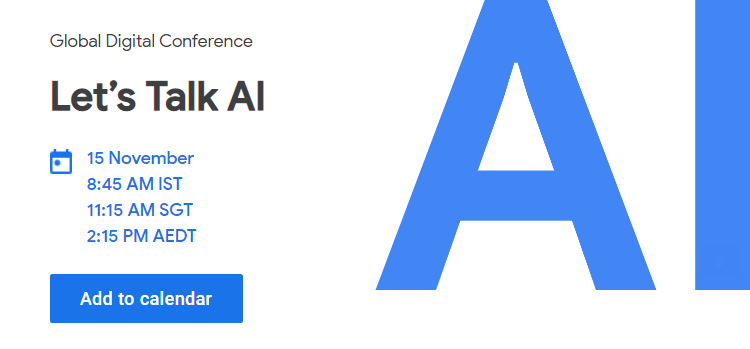
In a recent Let’s Talk AI Webinar by Google Cloud, Diane Greene, CEO of Google Cloud mentioned that by 2021, 75% of enterprise applications will use AI.
Like it or not, it’s going to be the next big thing in 2019 and beyond. It will transform every industry, just as electricity did 100 years ago.
At its heart, AI is computer programming that learns and adapts. It can’t solve every problem, but its potential to improve our lives is profound.
What exactly is AI?
AI is the new ground for gaining a competitive edge and creating business value. It refers to a machine’s ability to replicate the cognitive functions of a human being, with the ability to learn and solve problems. Sud Menon mentions in his research, “AI is basically about decision-making — smarter decision-making.”
Yes, it means higher effectiveness and efficiency, improved innovative capabilities and better opportunities awaits!
So, how do AI and SEO go hand-in-hand, you ask?
Well, AI incorporates the algorithm and the data used to determine the best and appropriate results. The data uses all kinds of contents, pictures, user behavior, and trust to help the users receive the desired information.
Think about Google Search, it was built on their ability to understand text in web pages. But now, thanks to advances in Deep Learning, they’re able to make images, photos, and videos useful to people in a way they simply haven’t been before.
With that being said, let’s look at which areas will AI likely have an impact on:
1. AI on Keyword Research
As stated by Jana Garanko, SEMRush’s Head of PR, AI is everywhere so SEO specialist must grasp firsthand knowledge on Machine Learning and AI.
Sometime in 2015, Google confirmed that it was using machine-learning algorithms to sort search results. You need to convince the AI that you are good for people that are searching for what you do. Part of that is having a strong library of relevant publications within your site.
Here’s a simple SEO keyword research model that you can follow:
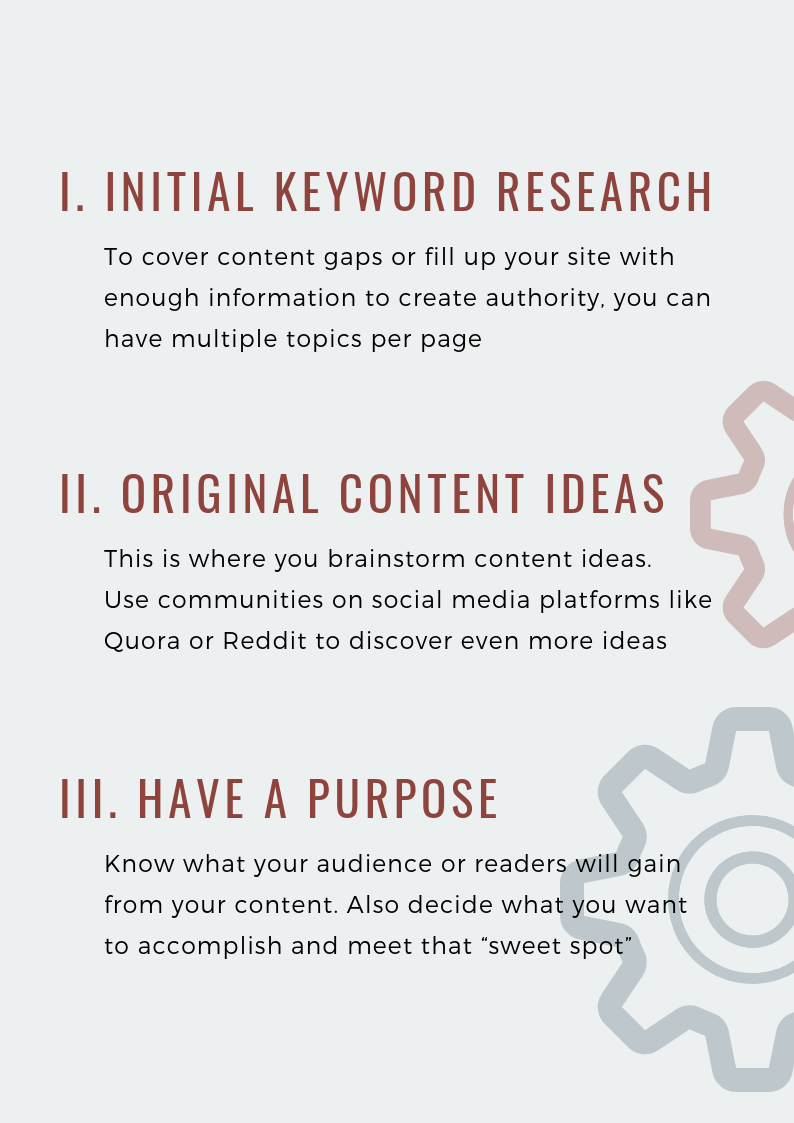
2. AI on Visuals
If you want to learn how to tie a necktie, would you rather read an article about it or a video?
The answer is obvious and Google knows about it too. Just type “How To Tie A Necklace” and video tutorials will show up on the first page of SERP.
Search engines are getting better at analyzing what visual content is about these days.
Just like how content writers had to learn to optimize headings and keywords, visual artists will have to start thinking about SEO when creating visual content like images and videos.
Here’s another written insight on How AI Impacts the Future of SEO I published last year, if you want to know more.
3. AI on Content
It is without a doubt that crafting great content is one of the most important factors for online success. This still holds true in the globalization of AI and SEO.
Yes, the AI can do a big bulk of data analysis off your shoulders but of course, it’s still your job to provide quality and valuable content. You might not realize it, but many tools you’re using now are already built on fundamental AI technology.

Take Grammarly for example, on every piece I write, the tool helps catch words that sound the same but has different meanings (“knew” and “new”) and spelling checker that editors like us don’t want to deal with.
4. AI on Links
Larry Kim, the then founder of Wordstream, predicts that websites with strong domains will come down from top rankings if they feature links to poor quality content.
Since the smarter search engines will analyze whether people clicking on your links actually stay and read or leave at once, SEO marketers need to focus even more on relevance and quality in their link building strategies.
Going forward, you’ll have to be more selective about your links. Here are some simple link building fixes:
5. AI on Analytics and Reporting
One of the most important parts of SEO, analytics and reporting integrated with AI will give SEOs far more analytical data than ever before. This allows them to shape content and technical strategies into more efficient results.
AI can also help businesses gain a deeper understanding of their customers. When this occurs, businesses produce better-performing content and ultimately learn how to increase their ROI more effectively.
6. AI on Sales

Bigger brands are starting the shift towards using chatbots to assist customers in making a sale.
A chatbot behaves more like a friend and engages in active conversation, in the same manner, a human would. Moreover, it is able to help customers 24/7 hence solidifying a personal relationship with each customer.
If you aren’t planning to use chatbots or implementing AI in your businesses, it’s time to start thinking about it seriously in order to assist your customers in their purchase journey.
7. AI in SEO Tools
BiQ is an SEO suite that contains 6 main modules to help marketers with their SEO. The suite includes core features such as; Content Intelligence, Rank Intelligence, Keyword Intelligence, Rank Tracking and more management settings.
Their unique selling proposition doesn’t only lie in their competitive intelligence capabilities. Their breakthrough also involves allowing users to pay only for what they use and don’t pay for what they don’t use. This means users don’t have to pay for the whole suite of SEO tools while only making use of one or two features.
Most importantly, BiQ provides a complete SEO solution to uncover ranking growth opportunities and effortlessly delivers the most reliable data and suggestions.
As listed in this 2019 SEO Guide, these are the 6 trends I’m preparing myself for SEO in 2019.
It will be about the rise of word vector, better user intent personalization, voice search, mobile and AI-powered technology. With all the SEO strategies all listed out for you, what is left now is utilizing it to the fullest.
Here’s to staying ahead of the curve and increasing your conversions on a massive scale in the coming year!
Are you ready for SEO in 2019 or are there still works to be done on your site? Do you see some new SEO possibilities that can be added in this 2019 SEO Guide?
Let’s chat in the comments below!
Updated: 1 January 2026


Save thousands of dollars (it’s 100x cheaper)

Zero risk of Google penalty (it’s Google-approved)

Boost your rankings (proven by case studies)
Rank High With This Link Strategy
Precise, Simplified, Fast Internal Linking.
